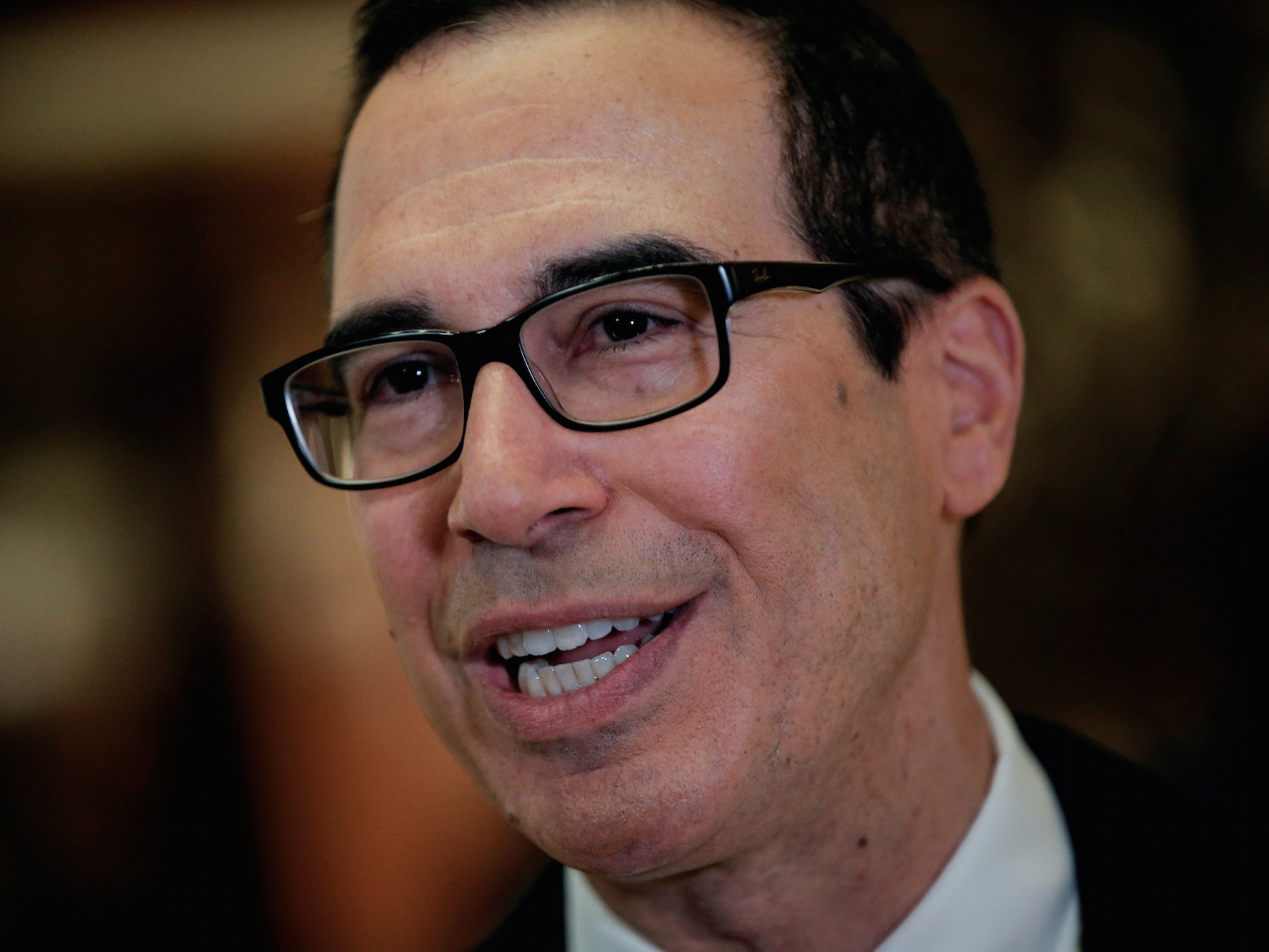The US has a national debt of $19.9 trillion and counting.
And while interest rates have risen sharply since Donald Trump was elected president, they are still relatively low in the grand scheme of things. But eventually there will be a day when rates rise and it’s not as cheap for the US to roll over its debt.
Not to mention that Trump has called for a massive $1 trillion infrastructure plan to build bridges, roads, and other infrastructure while planning to cut $9.5 trillion worth of taxes for both citizens and corporations. When all is said and done, Trump’s policies are expected to add $5.3 trillion to the national debt, according to analysis from the Committee for a Responsible Federal Budget.
And that’s why when Trump named former Goldman Sachs banker Steven Mnuchin his Treasury secretary last week, Mnuchin suggested he would consider issuing Treasurys with longer maturities in an effort to cushion the US economy from rising interest rates.
In an interview with CNBC, Mnuchin said he thought that interest rates would remain relatively low for the next few years and that “we’ll look at potentially extending the maturity of the debt, because eventually we are going to have higher interest rates, and that’s something that this country is going to need to deal with.”
The idea is that by issuing longer-dated maturities, the Treasury can extend the amount of time it has to pay the bonds back and still take advantage of relatively low interest rates in the US.
According to Citi analyst Jason Williams, the idea of issuing Treasurys with longer maturities is not new. The Treasury Borrowing Advisory Committee, which presents its observations to the Treasury Department on the strength of the US economy as well and gives recommendations on debt management issues, discussed the issue as far back as 2006 and as recently as 2011.
At the time it said, "Significant demand exists for high-quality, long-duration bonds from entities with longer-dated liabilities," and that it could allow the government to finance itself "at the lowest cost over time."
Williams notes that any such idea may take some time to implement as Mnuchin probably wouldn't be confirmed until after the first quarterly refunding meeting, so discussions about a 50-year issuance could be on hold until May or longer. Then, Treasury would have to analyze the new issue which, if the reintroduction of the 30-year bond in 2006 is any indication, could take up to a year.
As for how a 50-year bond could impact issuance, Williams says "there could be concerns with spillover effects on the 10y and 30y auctions" because the 50-year bond would "put further duration supply on the 3y/10y/30y auction week."
While Treasury may not have to cut issuance of other bonds due to higher upcoming deficits, the 7-year could put on a quarterly cycle and endure reissues like the 10-year and 30-year, Williams says.
If the 50-year bond comes to fruition, expect it to have a lower yield than the 30-year. "The flatness of 30s50s can also be seen in the Canadian bond market where the 50y issue trades slightly below that of the 30y benchmark," Williams wrote.
However the market responds, the issuance of Treasurys with a longer maturity are likely just a ploy to kick the can further down the road to the next generation.


